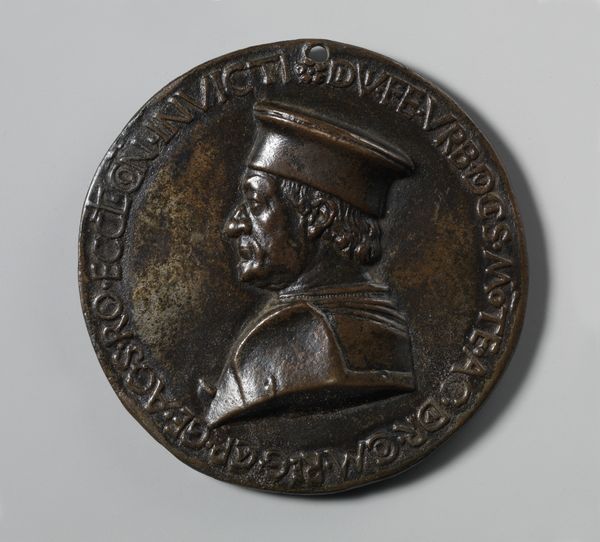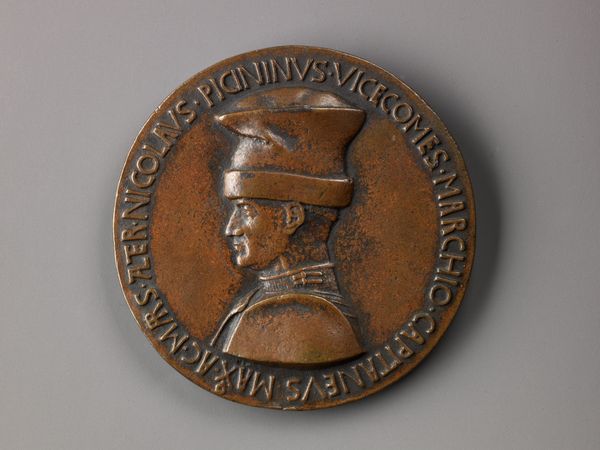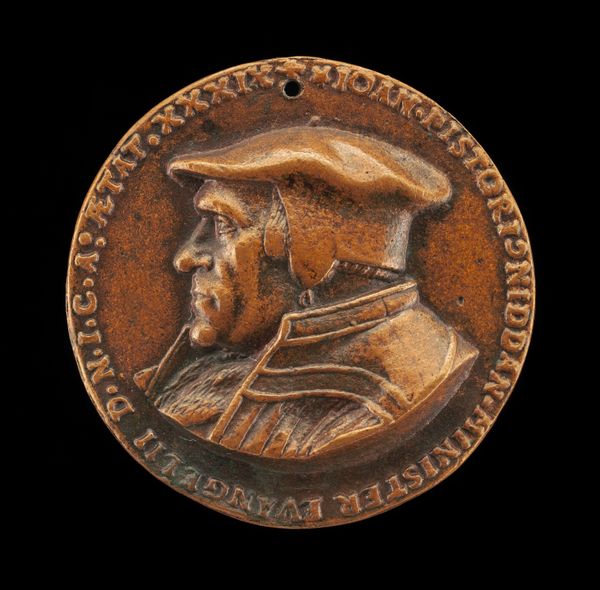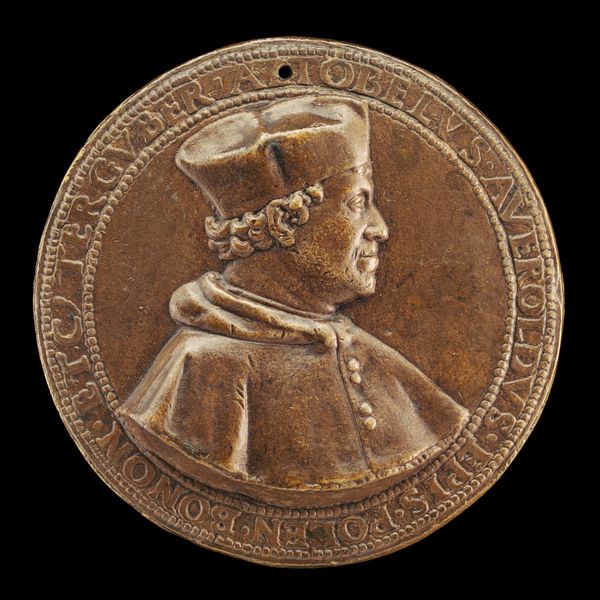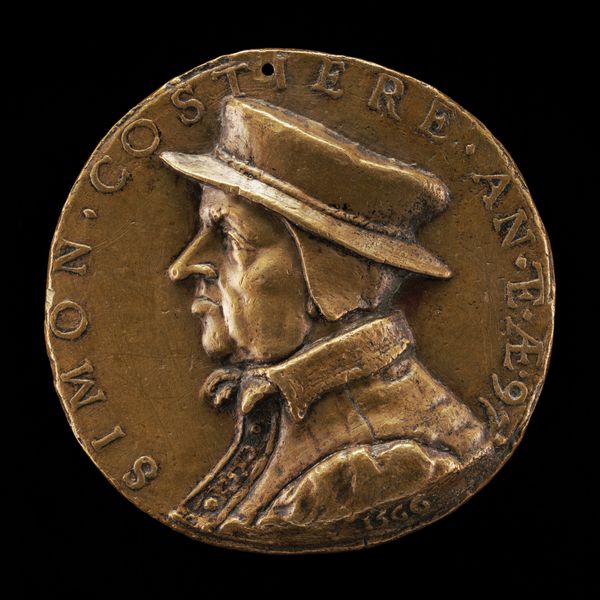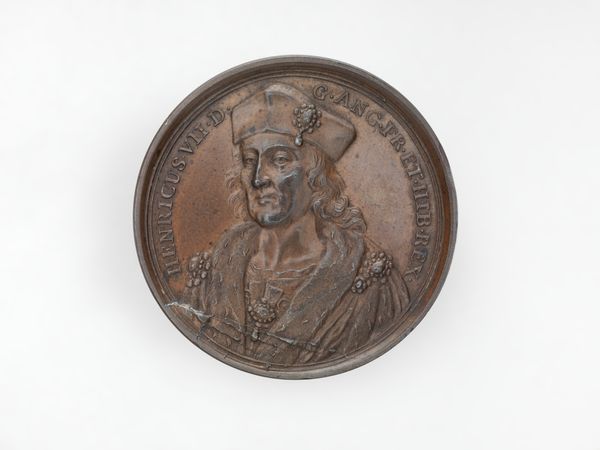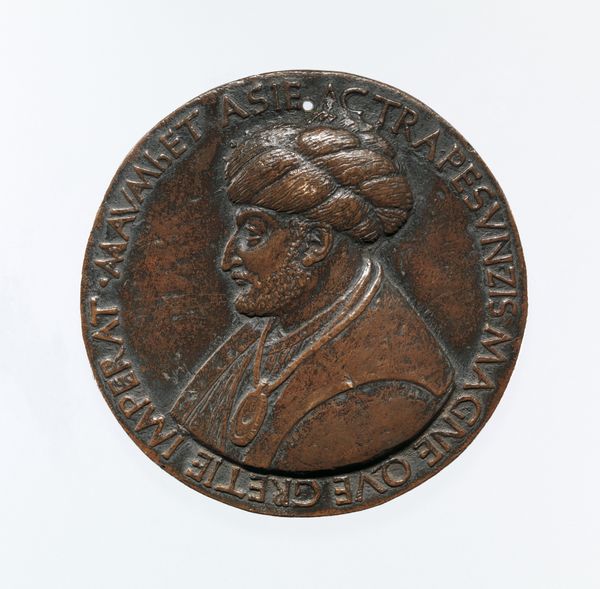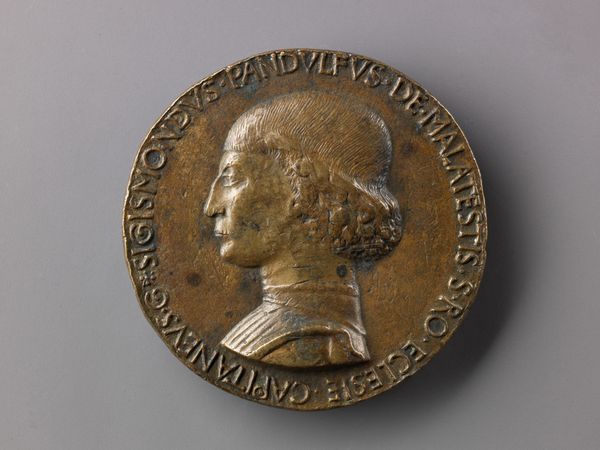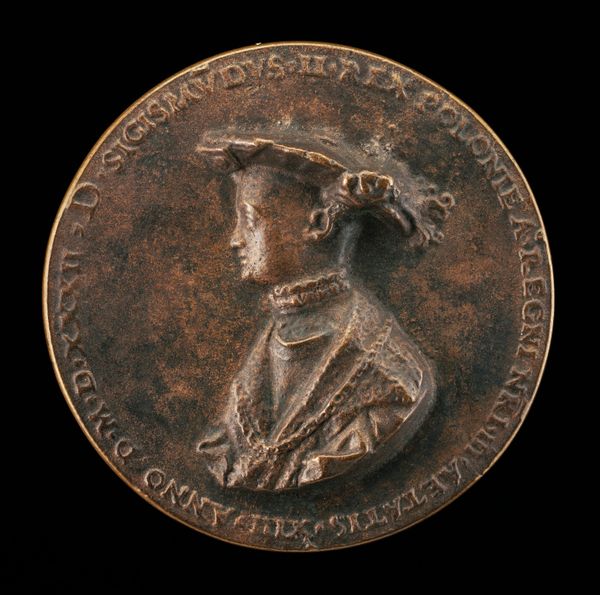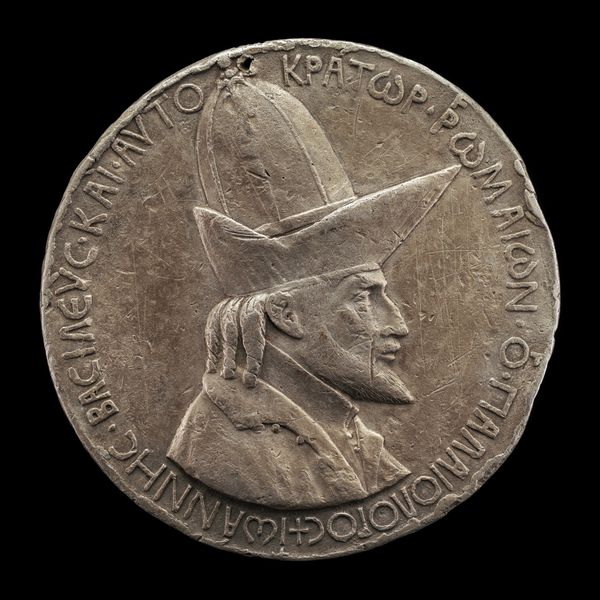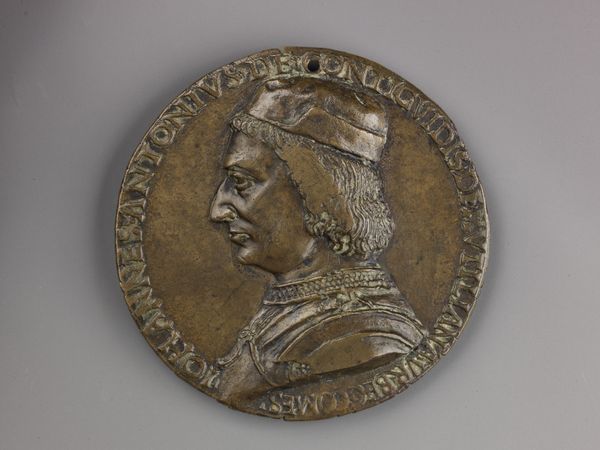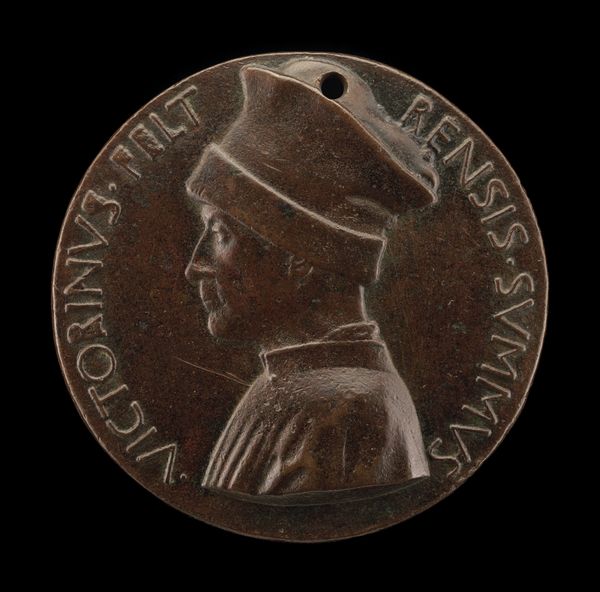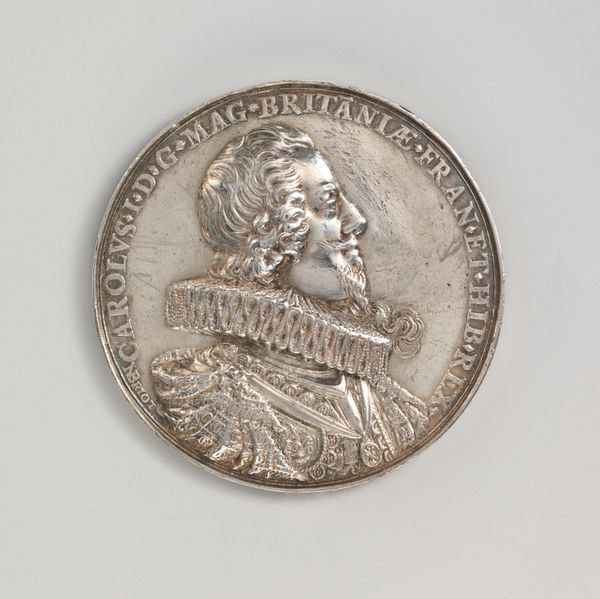
carving, metal, bronze, sculpture
#
portrait
#
medal
#
carving
#
metal
#
bronze
#
sculpture
#
men
#
italian-renaissance
#
profile
Dimensions: 10 cm, wt. 308.9 g.
Copyright: Public Domain
Curator: The first thing I notice is the commanding gaze of the figure in this bronze medal. The stark profile seems both vulnerable and strong, caught between the weight of leadership and perhaps some personal struggle. Editor: That's a powerful reading. What intrigues me most is the formal purpose behind a portrait medal. Here, we're looking at "Medal: John VIII Palaeologus," dating to the early-to-mid-15th century, crafted by Pisanello, celebrating the Byzantine Emperor John VIII. Curator: Absolutely, a ruler captured in a permanent form intended for widespread circulation! But I wonder, what symbols did Pisanello carefully select to encapsulate this emperor’s power, ambition, or even piety? His hat seems to be towering over him, casting shadow on his expression. What memories and values did it evoke in his contemporaries? Editor: Well, consider the political backdrop: John VIII was actively seeking assistance from the West against the Ottomans. Pisanello, through his distinct Italian Renaissance style, presents a portrait that balances imperial authority with a contemporary, almost human, face that might appeal to Western sensibilities. The medal served as a tool to shape opinion and sway political sentiment. Curator: That’s right – images are always deeply entangled in diplomacy! How intriguing that Pisanello doesn't use explicitly religious symbols, focusing instead on the gravitas and dignity of the man. It lends the image a timeless quality, transcending immediate political concerns and speaking to core notions of leadership. Editor: And to legacy. This wasn't just about the immediate crisis, it was also about securing a place in history, shaping how future generations would perceive John VIII. Pisanello brilliantly manipulates the limited space to create something of lasting significance. The politics of imagery, indeed! Curator: It’s remarkable to think that such a small object can bear so much intentionality, that this one likeness has influenced history in profound ways, even impacting culture now. Editor: Precisely. Examining how institutions commission, display, and interpret art offers insights into the politics and societal function of representation and what they try to express in the public domain.
Comments
No comments
Be the first to comment and join the conversation on the ultimate creative platform.
